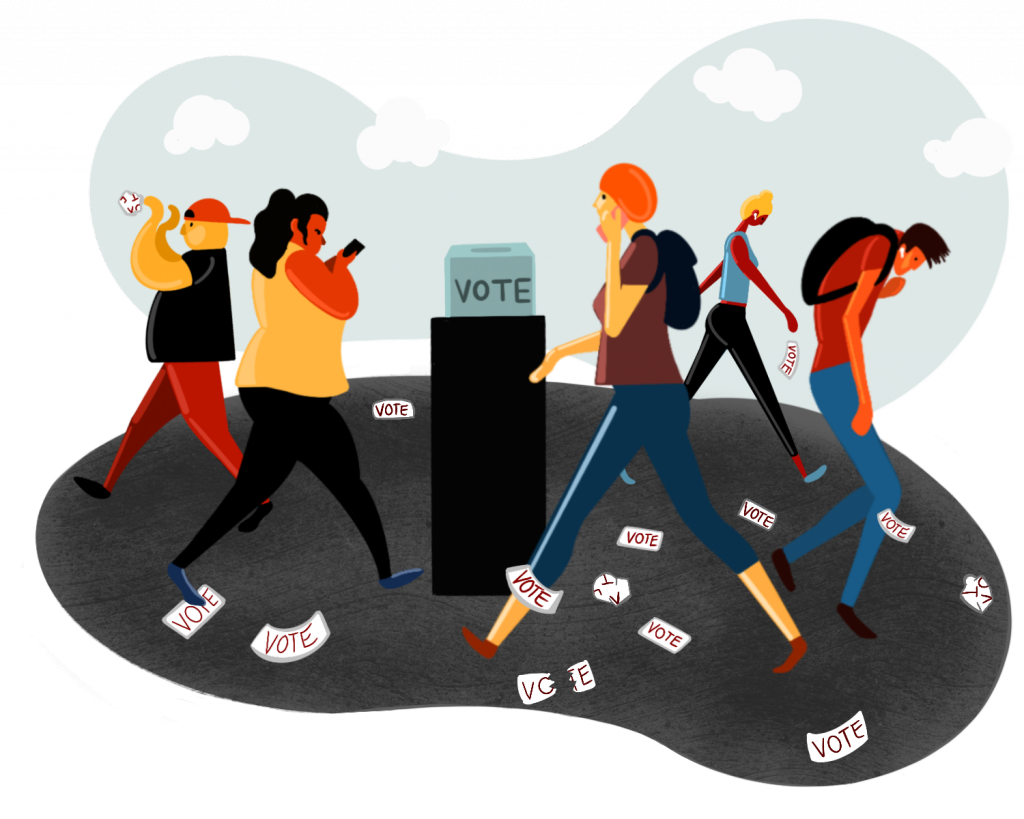In the Student Association (SA) elections for the 2019-20 academic year, voter turnout decreased by almost 800 people from last year.
This year, just 2,062 students voted for their SA representatives. Considering that Binghamton University has more than 16,000 undergraduate students, a turnout of 2,062 students represents around only 12.5 percent of the undergraduate student body. If the purpose of the SA is to communicate with students and represent their interests, it’s strange that so few students actually put in the minimal effort — filling out an online form — to vote. Even with last year’s higher voter turnout, 2,855 votes from more than 16,000 students is still abysmal.
Low voter turnout could result from the fact that most of the candidates ran uncontested, and the SA presidential race was largely uncompetitive. However, the Editorial Board proposes that this disparity may primarily come down to a lack of knowledge about elections on the part of students, which stems from a lack of publicity on the part of the SA. There was little publicity about when the elections occurred beyond SA-Line emails and posters hung up around campus. Perhaps more importantly, though, is the fact that far too many students have expressed that they just do not know much about the SA in the first place.
How can students expect the SA to aptly represent their interests if they don’t know what it is or what it does?
It’s no secret that the SA has been criticized in the past for its lack of transparency and communication with the student body. In fact, approximately three weeks ago, Pipe Dream published an article revealing that freshmen and transfer students had not received SA-Line emails since the beginning of the 2018-19 academic year and received their first email from the SA on March 1, preventing them from receiving SA election information early in the campaigning period. Given this history, the Editorial Board wonders when the SA will finally direct its energy into solving its communication problems. It must make a much more significant effort to connect with students, perhaps in more creative and unconventional ways. Even something as simple as creating Facebook events for SA Sweeps and elections can go a long way in reaching students who don’t comb through their emails for SA announcements.
Candidates can also do a better job at publicizing the elections and their platforms. We realize that the SA puts a limit on the amount of money candidates can spend on their campaigns, but this should prompt candidates to find more creative ways to connect with the student body rather than make them feel limited. Presently, it appears that candidates put most of their effort into meeting with campus publications and on-campus living communities in order to win their endorsements. Candidates should not prioritize seeking endorsements over meeting with students. For some positions, such as vice president for programming and vice president for multicultural affairs, which heavily rely on student feedback to create events and initiatives for students, candidates should attend meetings with relevant student groups to meet with students in a more direct fashion.
We cannot expect students to vote in the SA elections when the SA largely fails to inform students why they should participate. The Editorial Board sees great potential in next year’s SA E-Board, and we hope that it continues to strive toward creating a culture on campus that makes students eager to get involved.



